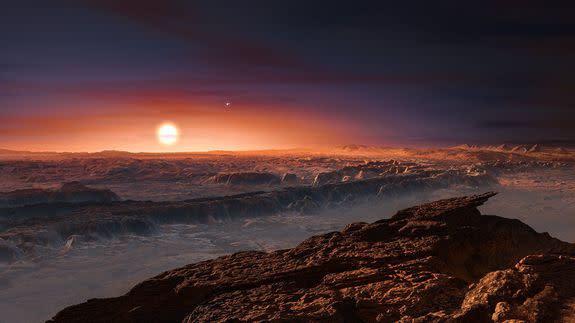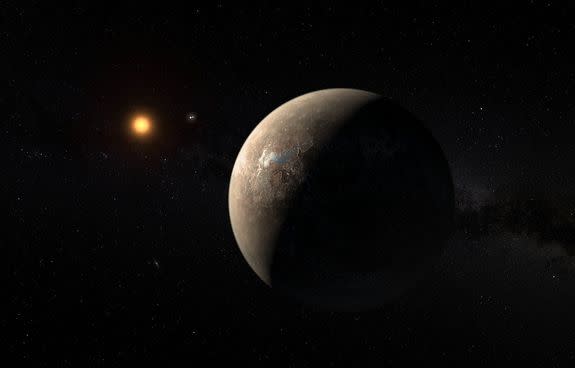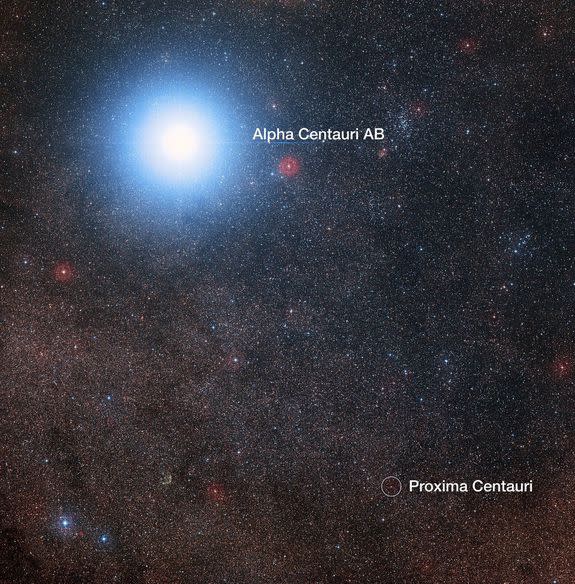Stop describing a planet as 'Earth-like' unless it really is

The discovery of a new, possibly habitable alien planet is always met by media coverage marked by sweeping pronouncements about our place in the universe, and even *gasp* alien life.
Wednesday's announcement of a newfound, possibly Earth-sized planet in a potentially habitable orbit around a star not far from our sun threw that kind of breathless coverage into overdrive.
SEE ALSO: A large, unknown 9th planet lurks in our solar system, evidence suggests
Publications declared it what could be the finding of the century, speculating on possible alien life just on our doorstep, circling Proxima Centauri, the dim red star closest to our sun. Above all, journalists chose to refer to Proxima b as an "Earth-like" planet, calling to mind oceans, trees and, for most people reading a general interest publication, advanced life.

Image: ESO/M. Kornmesser
That's a fascinating narrative, and one that's sure to draw people into a story, but there's just one problem with it: It's not true.
Not Earth-like
Yes, it's amazing that this possibly rocky planet is orbiting a star just 4 light-years away, possibly close enough to one day launch a mission to, but there is still so much we don't know about this brave new world.
Plus, Proxima b is far from being a twin of our planet.
Scientists aren't sure what kind of atmosphere it has or even if it's able to support a magnetic field, two things that it would need to sustain habitability in orbit around its active, flaring star.
We simply don't know if it can support water, life or much of anything on its surface at all.
Beyond the inaccuracy in this particular case, calling a planet "Earth-like" without knowing if it actually is, threatens to give members of the public a false sense of just how unique (or average) our Earth is.
Using tools on Earth's surface and above it, we've found more than 3,000 diverse worlds orbiting stars far from us. Some of them could actually be like our planet, but jumping the gun and saying they are without actually knowing informs no one.
Just like discoveries confirming water on Mars every year, the public can get fatigued with findings if they aren't presented with the proper context.
Why not save the Earth-like label for something that truly is?
"If we say Earth-like in every press release, it kind of cheapens it in a way," NASA exoplanet scientist Steve Howell told Mashable in an interview.
And he would know. For years, Howell has worked with NASA's Kepler Space Telescope — which searches for alien worlds out in the universe.
Scientists are going to keep making these kinds of amazing discoveries, and in all likelihood, if researchers keep at it, they will eventually find a planet that could really be a twin of our own.
Some people refer to this "Earth 2.0" as the holy grail of exoplanet hunting, and while we still haven't found a perfectly Earth-sized planet in a habitable orbit around a sun-like star, it hasn't stopped publications from proclaiming that we have.
Just have a little patience
It takes more than being Earth-sized to make a planet Earth-like.
While scientists have the tools to estimate the mass of an exoplanet, historically, they haven't been able to tell exactly what kind of atmosphere envelops a small world light-years from Earth. The composition of a world's atmosphere is exceedingly important when it comes to understanding the habitability of a planet.
Without the specific composition of elements in Earth's atmosphere, for instance, life as we know it today would either be very different from what it is now, or it wouldn't exist at all.

Image: Digitized Sky Survey 2 Acknowled
The technological limitations preventing us from deeply examining the atmospheres of small exoplanets are changing, however.
The Hubble Space Telescope was recently able to check out the atmospheres of two Earth-sized planets about 40 light-years from us. The Hubble wasn't actually able to tell if the worlds have atmospheres that would be hospitable, but it did rule out the idea that both are blanketed by a thick atmosphere that you might find on a gaseous planet.
In the next 10 to 20 years, more and more huge telescopes on Earth will start coming online, allowing scientists to scan the heavens for signs of life and pleasant atmospheres on close-by alien worlds. Proxima b will likely be a great target for that kind of followup research.
Plus, NASA's James Webb Space Telescope is due to launch in 2018, possibly providing new views of alien atmospheres that could pick up possible biosignatures — like oxygen — floating around on those worlds.
But until then, we'll probably have to keep on waiting before we call anything truly "Earth-like."
